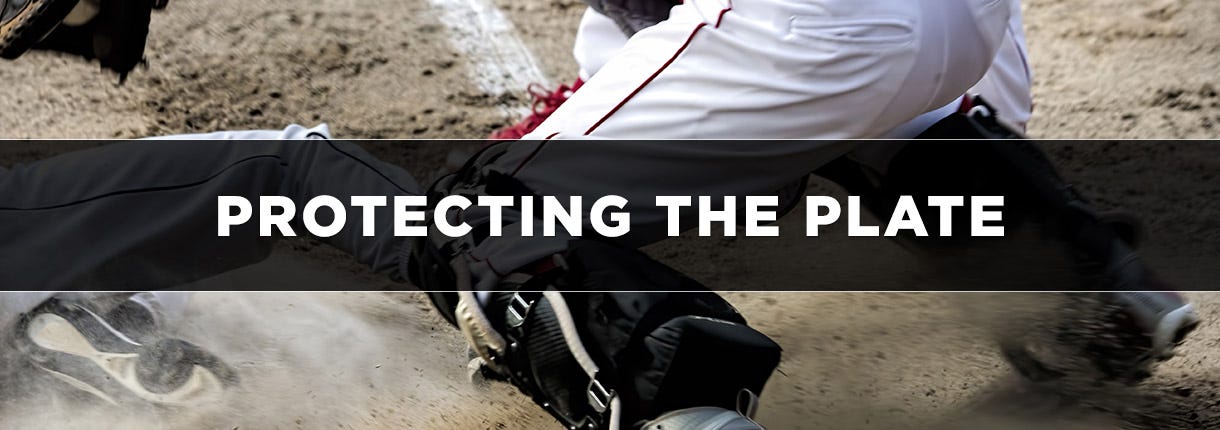Protecting the Plate

The role of the catcher may be one of the most demanding of any baseball position, both physically and mentally. A quality catcher needs to know more than how to catch and throw the ball. He needs to be able to think on his feet and make split second decisions all game long. While catching is obviously physical, the position also requires a great amount of mental strength. A catcher who can handle the mental part of the position will quickly rise to the top.
The team naturally depends on the catcher a lot since he is the last defense to avoid a score. He has the best view of the field and must always know what IS happening and what WILL happen. He needs to know the game of baseball as well as the coach does.
Besides receiving the pitch, the catcher's primary job is to protect home plate. To do this effectively, the catcher must be trained to anticipate plays and to respond quickly.
A fair ball should prompt the catcher to immediately come up out of his crouch and move in front of home plate. The mask should stay on unless the ball is popped up or vision is otherwise limited. Unless he is going for the ball himself, the catcher should never be more than a foot or so in front of the plate. This gives him the best position on a potential tag.
The catcher should position himself relative to the location of the hit, using home plate as a reference. If the ball is hit to the left field side, he should line up using the third base corner of home plate as a guide. Likewise, if the ball is hit to the right field side, he should use the first base corner of the plate as a guide.
When blocking the plate, give the runner the back half of the plate. This gives the runner a clear target (which will reduce the number of collisions), and also the illusion of a safe path to home. Once the ball is caught, the catcher should take a quick step onto the third base line, making sure to square his knees toward third base and stay low. The runner will have the advantage of momentum. Staying low gives the catcher a lower center of gravity and a greater chance to stop the momentum.
The ball should be gripped tightly in the throwing hand, then placed inside of the mitt. By holding the ball in the mitt alone, the catcher faces the possibility of the shock of an impact easily dislodging it. Keep the tag low and use the back of the mitt. Once the tag is applied, the catcher should spin away toward the infield, ready to make a throw to another base if the situation calls for it.
This article was originally published on October 26, 2015, and has been updated with new information.






Login and Registration Form
or
Create an account